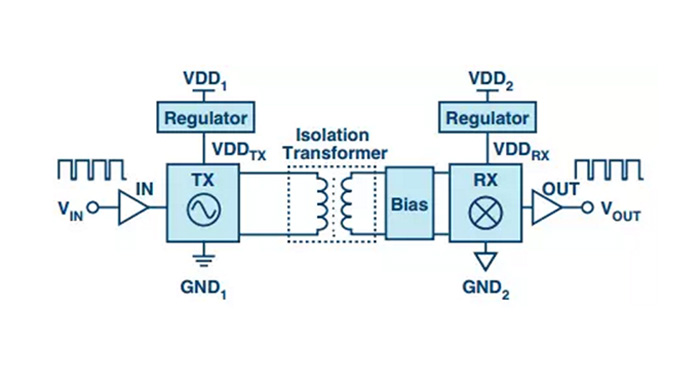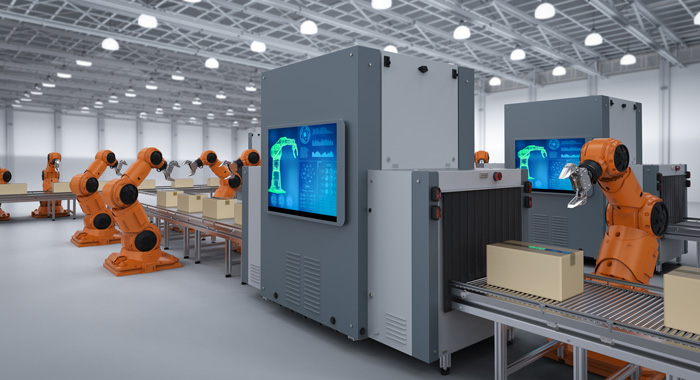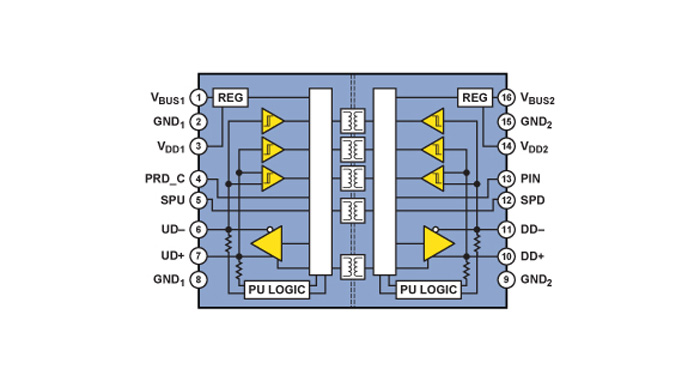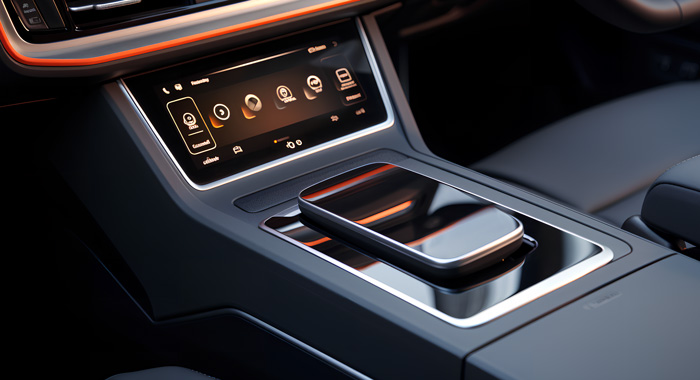Digital isolator is an electronic component widely used in electronic factories and is important in improving circuit safety. It changes how signals are transmitted and protected within digital circuits, significantly improving the performance and reliability of electronic equipment in various industries.
With the advancement of CMOS process technology, digital isolators have become the technology of choice for isolating. This article focuses on the characteristics of digital isolators and the end applications.
What are Digital Isolators?
The digital isolator mainly isolates the digital signal from the input terminal in the digital circuit from the output terminal to prevent sudden changes in current or voltage, or circuit faults from affecting other parts of the circuit. It can effectively reduce the noise of ground loops and ensure that data transmission does not pass through electrical connections or leakage paths, thereby improving system reliability and safety.

Source from Internet
Compared with optocouplers, digital isolators have greatly improved timing parameters such as propagation delay, pulse width distortion or offset, device consistency, and common-mode transient immunity (CMTI).
Working Principle
Digital isolators use photoelectric or magnetic isolation technology to replace traditional current signals with light or magnetic fields to reduce possible electrical interference, amplifier distortion, and other problems in signal transmission. When signals are input, the digital isolator converts these signals into optical or magnetic signals and passes the signals to the output through the isolation layer.
Electrical isolation removes the ground loop between the two circuits and can block the propagation of common mode, surge, and other interference signals. The equipment that needs to transmit signals between high and low voltages often requires electrical isolation.
In addition, digital isolators can also perform data exchange, transmission, and control between different circuits, enabling fast, efficient, and accurate communication between various components.
Unlike traditional optocouplers and transformers, digital isolators utilize semiconductor-based technology to transmit digital signals across isolation barriers without physical connections.
Common applications of digital isolators include digital high-speed channel circuits, serial interface isolation, and instruments used to monitor digital signals (such as logic analyzers).
End Applications of Digital Isolators
Isolators are isolated signal interference between circuits and improve system stability and safety. To comply with the system requirements of safety regulations, digital isolators are widely used in various industries. It drives developments in the semiconductor industry, industrial automation and intelligence, digital healthcare, automotive electrification, and instrumentation.
Industrial Applications
The environment in which industrial electronic equipment operates is usually filled with unstable factors, such as strong electromagnetic fields, surges, fast transients, and high noise bases. To ensure that the device can operate without failure for a long time in this environment, it is essential to design a reliable isolation circuit.
Digital isolators typically isolate control signals from high-voltage power supplies and noisy environments to ensure the reliable operation of sensors, actuators, and programmable logic controllers. Industrial electronic equipment often uses DC isolation to prevent potential high-voltage hazards from causing harm to the system and users.

Source from Internet
Digital isolators maximize the benefits of modern CMOS technology. Because digital isolation devices use semiconductor process technology that facilitates the creation of transformers or capacitors, both performance and functional integration are improved. Compared to optocouplers, digital isolators can easily provide multi-channel isolation solutions with a smaller footprint, improve system reliability due to lower failure rates, and provide twice the electrical noise immunity, allowing operation over a wider temperature range without aging or degrading performance over time.
Medical Applications
Application in medical equipment, digital isolators prioritize patient safety by enabling secure data transmission between the low-voltage circuits that process patient data and the high-voltage power supplies that drive the medical equipment.
Medical devices need to handle the new requirements of electromagnetic compatibility (EMC) in different application environments. Only by properly transmitting these measurements without being affected by high voltages and electromagnetic interference can data maintain higher integrity, leading to more accurate diagnoses, better insights, and ultimately better treatment outcomes.

Source from Internet
Generally, the connection between medical equipment and the patient requires physical isolation. Methods to meet electrical safety include radio frequency communications and wired interfaces. However, radio frequency communications are susceptible to interference from radio frequency sources, and are prone to malicious tampering. In situations where data integrity and stability are required, wired interfaces are more suitable. Commonly used interfaces include USB, RS-232 and RS-485.

Source from Internet
Analog Devices Inc ADuM4160 isolator enables simple and inexpensive peripheral isolation in USB applications, allowing USB to be used in medical applications well beyond diagnostic ports and temporary connections. It also features 2MOPP anti-defibrillation protection. As a USB port isolator with ADI iCoupler digital isolation technology, it combines high-speed CMOS technology with monolithic air-core transformer technology to provide excellent operating performance and is easily integrated with low-speed and full-speed USB-compatible peripherals.
New Energy Vehicles
Due to safety regulations and equipment protection requirements, digital isolators are increasingly used in high-wattage power electronic equipment in new energy vehicles, including on-board chargers, battery management systems, DC DC converters, and motor control drive inverters. , CAN/LIN bus communication and other automotive electronic systems have become key components of new electronic transmission systems and battery systems.

Source from Internet
The CAN communication between the electronic control unit and the motor controller requires an isolation chip, the quality inspection of the power tube and controller requires an isolated gate driver, and the power supply sampling of the motor drive requires an isolated ADC/isolated operational amplifier.
The high-voltage battery of a pure electric vehicle or a hybrid electric vehicle can reach 200V to 400V and has a high operating temperature, which requires the digital isolation chip to have high withstand voltage characteristics and meet vehicle-level temperature requirements. Traditional optocouplers can no longer cope with the need to work in high-temperature environments. In addition, digital isolators enable simplified automotive interior design requirements.
Conclusion
Digital isolators are essential electronic components for circuit safety. However, isolation comes with limitations in terms of latency, power consumption, cost, and size. As demands across industries continue to increase, there is a need to achieve higher performance while improving security. Therefore, digital isolators need to develop in the direction of faster transmission speed, higher transmission efficiency, higher integration, higher voltage resistance, lower power consumption, and higher reliability.